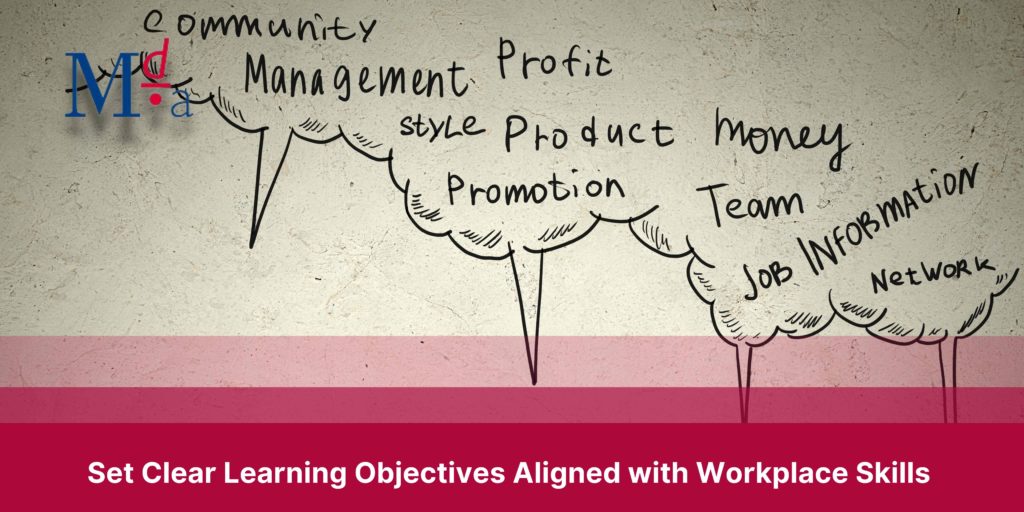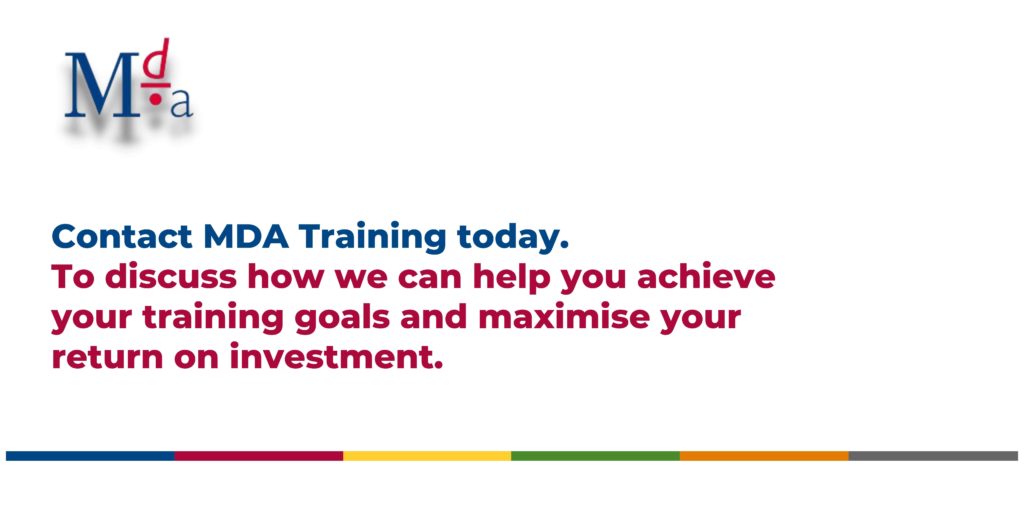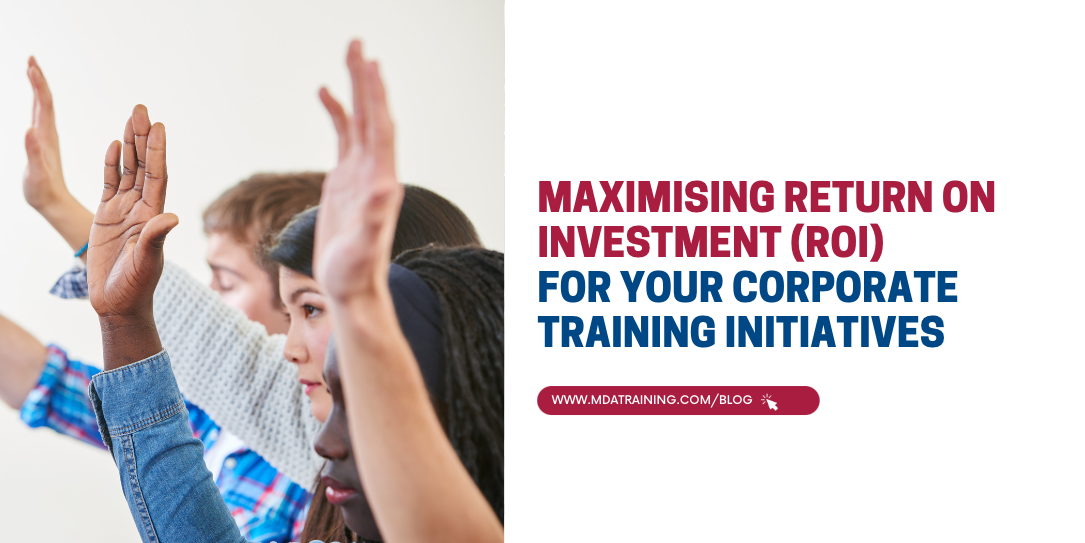Corporate training has long been a fundamental part of employee development and business growth.
From leadership development to technical training, organisations invest significant time and resources into ensuring their employees have the skills they need to perform their jobs effectively.
However, simply offering training programs isn't enough to guarantee success. Organisations must also ensure they are maximising the return on investment (ROI) of their training initiatives.
Defining and Measuring ROI
Before we delve into how to maximise ROI for corporate training, let's first define what we mean by ROI. In the context of training, ROI is a measure of the benefits an organisation receives from its training initiatives compared to the costs of delivering those initiatives.
Measuring ROI for training programs is essential to assess their effectiveness and value. However, it's not always easy to measure.
Many learning and development (L&D) professionals struggle with defining ROI and determining how to measure it.
In fact, according to a survey by LinkedIn Learning, only 8% of L&D professionals believe they can accurately measure the ROI of their training programs.
So how can organisations ensure they are maximising the ROI of their training initiatives? Here are three tips to consider:
1. Align Learning with Organisational Goals

The first step in maximising the ROI of your training programs is to ensure they are aligned with your organisation's goals. Training should not be viewed as a standalone activity, but rather an integral part of achieving business objectives.
When designing a training program, start by identifying the business objectives it aims to support. Then, ensure the training initiative is closely tied to these objectives.
This alignment ensures the training has a direct impact on business performance and makes it easier to measure the ROI of the program.
2. Set Clear Learning Objectives Aligned with Workplace Skills

Setting clear learning objectives is another crucial step in maximising the ROI of your training initiatives. Learning objectives should be expressed in terms of what the learner will be able to do back in the workplace, not what the trainer will do.
This subtle shift in perspective changes the focus from the training itself to the capabilities and skills that learners will gain.
When setting learning objectives, ensure they are closely aligned with the skills or behaviours required in the workplace.
This approach ensures that the training is relevant and applicable to the learners' jobs, making it more likely that they will use the new skills and behaviours in their work.
3. Encourage Participant Commitment

Another critical factor in maximising the ROI of your training initiatives is to encourage participant commitment.
Participants who are committed to their learning are more likely to apply what they have learned in the workplace.
Encourage participant commitment by engaging them in the learning process before, during, and after the training program. Pre-cueing the learning with questions aligned to workplace goals as pre-learning is one way to engage learners before the training starts.
During the training, encourage learners to commit to changes they will make in the workplace as their learning and insights grow.
Finally, follow up with learners after the training through conversations with line managers and performance reviews to reinforce the training and its impact on the workplace.
Let's take a look at some real-world examples of organisations that have successfully maximised the ROI of their training programs:
1. IBM
IBM implemented a program called the "Academy of Technology" to enhance the technical skills of its employees. The program consisted of 40 courses focused on technical skills, and learners were assessed before and after the training to measure its effectiveness. The results showed a 10% increase in productivity and a 15% increase in employee satisfaction.
The success of IBM's "Academy of Technology" program was attributed to its alignment with the organisation's goals, clear learning objectives, and the active participation and commitment of its employees.
2. Bank of America
Bank of America implemented a comprehensive training program to improve customer service and reduce customer complaints. The program focused on developing communication and problem-solving skills, and employees were given regular feedback and coaching. The results showed a 10% decrease in customer complaints and a significant increase in customer satisfaction.
The success of the program was attributed to its alignment with the organisation's goals, clear learning objectives, ongoing feedback and coaching, and the active participation and commitment of its employees.
1. Implement a Robust Evaluation Plan
To maximise the ROI of your corporate training initiatives, it's important to evaluate the effectiveness of your training. This can be done through the implementation of a robust evaluation plan that can help you measure the effectiveness of the training program in terms of employee performance and behaviour change.
The Kirkpatrick model is one of the most widely used models for evaluating training programs. It is a four-level model that measures training effectiveness at four different levels:
- Level 1: Reaction - how did the learners react to the training?
- Level 2: Learning - what did the learners learn from the training?
- Level 3: Behaviour - did the learners apply what they learned in the workplace?
- Level 4: Results - what was the impact of the training on the business?
By implementing the Kirkpatrick model or a similar evaluation plan, you can gain a better understanding of the effectiveness of your training program and make adjustments as necessary to improve ROI.
2. Embrace Technology
In today's digital age, technology has become an integral part of corporate training initiatives. From eLearning to virtual classrooms to mobile learning, technology has made it easier and more convenient for learners to access training materials and complete courses.
In addition, technology has made it easier to track and measure the effectiveness of training programs. Learning management systems (LMS) allow you to track learner progress and performance, while analytics tools can help you measure the impact of the training on employee behaviour and business outcomes.
By embracing technology, you can not only improve the effectiveness of your training program but also increase ROI by making training more accessible and measurable.
3. Foster a Culture of Continuous Learning
Finally, to maximise ROI on corporate training initiatives, it's important to foster a culture of continuous learning within your organisation. This means creating an environment where employees are encouraged and supported to continue learning and developing new skills throughout their careers.
By promoting a culture of continuous learning, you can not only improve employee performance and productivity but also create a more engaged and motivated workforce. Employees who feel supported in their development are more likely to be loyal to their organisation and stay for the long term.
Case Study: How One Company Achieved Significant ROI on their Training Program
To illustrate how effective training programs can lead to significant ROI, let's take a look at a real-world example. In 2016, Siemens AG, a global electronics and electrical engineering company, embarked on a training program aimed at improving the leadership skills of its managers.
The training program was designed to help managers develop the skills needed to lead in a rapidly changing business environment. The program consisted of a series of workshops, coaching sessions, and on-the-job learning opportunities.
To measure the effectiveness of the training program, Siemens conducted a comprehensive evaluation using the Kirkpatrick model. The results were impressive:
- Level 1: Reaction - 98% of participants rated the training as excellent or good.
- Level 2: Learning - Participants demonstrated a significant improvement in their knowledge and skills, with an average improvement of 35%.
- Level 3: Behaviour - Managers who participated in the training program demonstrated significant improvements in their leadership behaviours, resulting in increased employee engagement and satisfaction.
- Level 4: Results - The training program led to significant improvements in business outcomes, including increased revenue, improved customer satisfaction, and higher employee retention rates.
As a result of the training program, Siemens was able to achieve a significant ROI of 250% on its investment in training. This demonstrates the power of effective training programs to drive business success and achieve measurable ROI.
How MDA Training Can Help

At MDA Training, we understand the importance of maximising ROI on your corporate training initiatives. That's why we offer a range of training programs and solutions designed to help you achieve your business goals while delivering measurable ROI.
To ensure a successful corporate training initiative, it is essential to have a structured and strategic approach.
By aligning learning with business objectives, setting clear learning objectives, and seeking commitments from participants, organisations can maximise their return on investment.
Investing in quality training programmes can lead to significant improvements in employee performance, job satisfaction, and overall organisational success.
MDA Training offers a range of bespoke training programmes designed to meet the specific needs of your organisation. Contact us today to discuss how we can help you achieve your training goals and maximise your return on investment.









